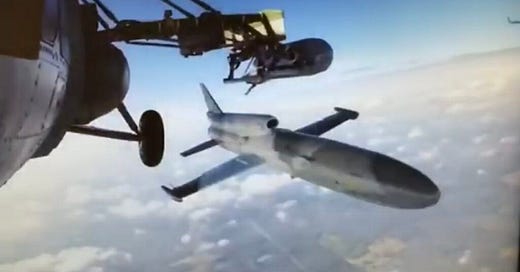Russia Is Now Bombing Ukraine with Practice Drones, but Why?
Even defense analysts can’t explain the logic
The latest missile to join the Russian terror campaign is one of the weirdest: a target drone that the Russians have modified for a one-way attack.
The Dan-M is a 350-kilogram jet-powered unmanned aerial vehicle that Russia’s Sokol design bureau designed for air-defense training back in the early 1990s. Launched from the ground or air, a Dan-M is capable of flying at very low altitude and high subsonic speed for as long as 40 minutes. It essentially mimics the flight characteristics of the U.S.-made Tomahawk cruise missile.
On or before Thursday, Russian forces in Crimea launched three Dan-Ms at Ukraine. The Russians had modified the Dan-Ms into a kind of “attack UAV,” according to drone expert Serhii “Flash” Beskrestnov. The modifications included repainting the drones from their normal bright red to a more subtle color, Beskrestnov wrote—and presumably also included the addition of a warhead.
It’s unclear whether the Dan-Ms struck their targets. “For information security reasons, I cannot report the fate of this group of attack UAVs,” Beskrestnov wrote.






It reminds me of this apocryphal tale:
Stories that have now become entrenched in urban legend suggest that the German forces took such a long time to complete the project, that Allied reconnaissance pilots had ample time to observe what was happening, take photos of the fake wooden airfield, and report back to headquarters.
The legend suggests that, on learning of the fake airfield, a Royal Air Force aircraft decided to cross the Channel, and circle the fake airfield, before dropping a large wooden bomb with “Wood For Wood” written on it – perhaps as a joke to wind up the enemy or to let the enemy know that Allied forces were on to their decoy plot.